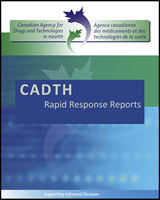For patients with estrogen receptor-positive (ER+) and lymph node-negative (LN−) early stage breast cancer (ESBC), the decision to initiate adjuvant chemotherapy (ACT) after surgery has traditionally been guided by clinical and pathological factors (i.e., characteristics of the patient and the tumour), in conjunction with clinician and patient preferences. In the absence of ACT, 15% of these patients will have a cancer recurrence within 5 years yet up to 90% receive ACT.1 Unfortunately, many patients are therefore exposed to ACT toxicity and cost with little or no clinical benefit, and identifying those who do benefit remains a challenge.1 The dilemma has pushed researchers to seek additional methods to evaluate cancer recurrence risk in order to support better decision-making about ACT. Gene-expression profiling (GEP) is an emerging clinical strategy which proposes to meet this need by using genomic information to inform risk prediction and treatment selection one patient at a time.1
Oncotype DX (ODX) (Genomic Health, Inc., Redwood City, CA) is a serum GEP test that was first marketed in the United States (US) in 2004. It was designed to measure the 10-year risk of tumor recurrence in ESBC at the time of initial diagnosis.2 Risk is reported as a 21-gene signature or recurrence score (RS) on a scale of 0–100. The RS is then translated into one of three categories of risk: low (RS<18), intermediate (RS 18–30), or high (RS>30).2 ODX aims to complement traditional prognostic information via better risk stratification, and thus help to identify patients most likely to benefit from ACT. ODX was initially developed in women with ER+ LN− ESBC (65% of patients at diagnosis), although its use has since been explored for the lymph node-positive (LN+) population.2–5 This report explores the evidence available to date on the use of ODX in patients with ER+ LN− ESBC, the clinical utility of the test, and its impact on treatment decisions.

